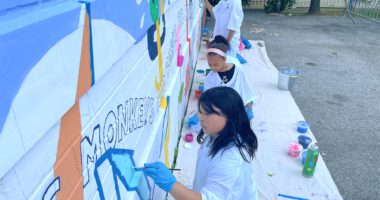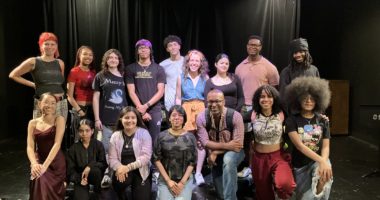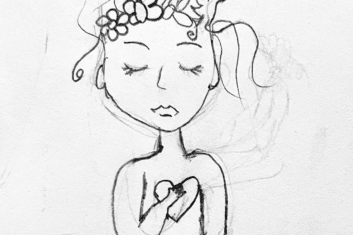

Have you ever heard the saying, “The Show Must Go On” ? It’s a common utterance amongst theater folk in an actor’s dressing room or a director’s rehearsal. No matter what, the show must go on. And it usually does, but at what cost? I can remember a cast mate having to miss their sister’s wedding or a stage manager calling a show with a fever. They made these sacrifices because there was no alternative given, no choice. The show must go on!
I recently took a workshop on Consent and Creativity: Healthy Relationships in Theater hoping to discuss this flawed staple of the theater community. We were led through an exercise to physicalize “enthusiastic consent”. Our host, Mandy, began with “You are welcome to participate,” and “I invite you to turn on your videos.” She started the exercise asking, “Imagine in your body what an Enthusiastic Yes looks like?” She told us to “think ‘Yes’ with your body, your shoulders, your feet.” Participants turned on their video with bright eyes, open arms, and smiles. Mandy then asked the group, “Show me No with your body.” I immediately turned my video off, other participants crossed their arms or looked away from the camera.
The feeling of “No” in my body reminded me of an acting teacher who would tell their students to come to class with their glass empty, to please leave everything personal at the door. Perhaps the hope was to have a classroom that was a neutral space, but it just made me feel closed off. Although I was showing up and saying yes to participating, my body language was telling the opposite story.


After the embodying consent exercises, Mandy then read us this statement: “Artists have the right to a safe place to work and collaborate regardless of experience, union status, or contract type.” This resonated deeply with me. In theater spaces, I often feel that I must serve the story first, and put my personal life and health second. The show must go on! But this declaration of a right to a safe place to work made me feel like I had a choice, that I was able to come to the room as myself, not with an empty cup.
The third part of the enthusiastic consent exercise was the question, “What does freedom look like in the body?” There were similarities to the Yes body, however there was more movement and less static energy. I saw participants making bolder choices and sharing more on their videos. I myself felt more comfortable to share as well. I began to wonder, rather than focusing on creating a safe classroom, is it more about a classroom where students can feel free? Mandy then shared, “We must make the space free for everybody. Which means that ‘anything goes’ isn’t the rule because what goes for you could be interfering with somebody else’s freedom.” This is where collaboration needs some boundaries — so we can all feel free.
Next we discussed the 6 C’s of creating a safe rehearsal space/classroom: Context, Communication, Consent, Choreography, Closure, and Community. I loved her definition of Communication, which was to “check in with your partner in lots of ways and often. For example: How was that? Is there anywhere you don’t like to be touched? Ask questions.” To me, a free space is one where I can ask questions. I then started to think of theater exercises or games that included this moment of check in and questioning.
There is a golden rule of improv called “yes and”. The premise of the rule is to encourage all ideas rather than edit or dismiss. For example, if we were going to plan for a birthday party, I would ask my students to each suggest something to bring, such as a chocolate cake or balloons. Student A would start with “I’m going to a birthday party and I’m bringing a trampoline”, then Student B would follow the golden rule ‘yes and’, saying “I’m bringing popcorn. Student C would say “yes and I am bringing flamingos,” etc.


Then we reverse the rule to “no but” and see how far we get in planning a birthday party. Student A shares, “I’m going to a birthday party and I’m bringing banana bread pudding.” Student B then says “no, but I’m bringing red velvet cake,” and then Student C continues with “no but I am bringing ice cream.” The birthday party ends up unplanned. When I play this game with my students, they often agree that they’d rather go to the “yes and” birthday party.
While I find there are some problems with the golden rule “yes and”, I do think that adding boundaries like check ins and asking for enthusiastic consent can help explore these rules and ultimately question them, just like I’m questioning the saying “The Show Must Go On”. All of this will continue to maintain freedom in the classroom while ensuring students feel comfortable and free to express their full range of expression. With emotionally considerate practices like these, it’s about time we come up with a new cheer.



